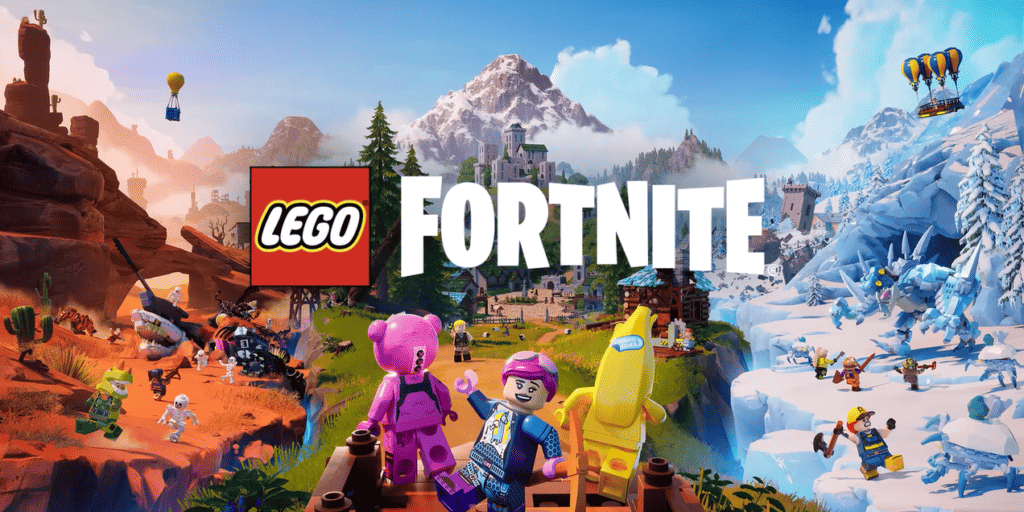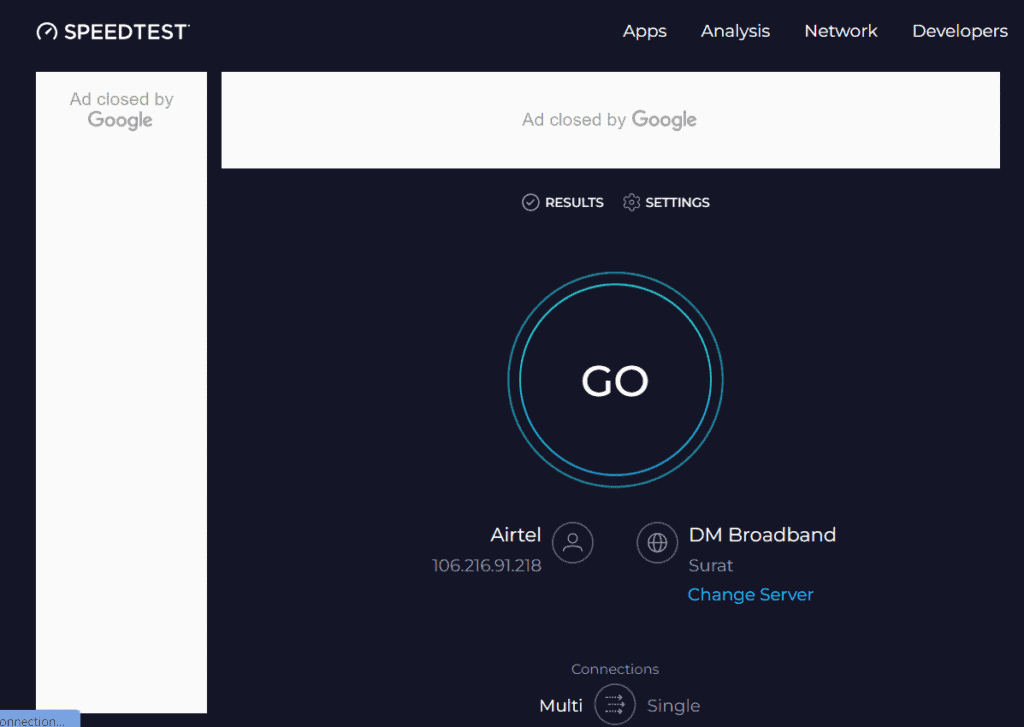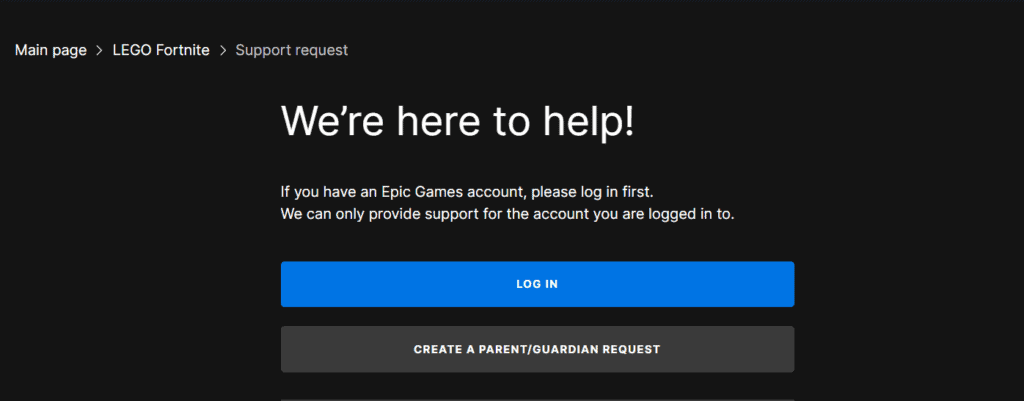Lego Fortnite is a popular game that’s enjoyed by many players around the world.
However, some users may encounter issues with the game not working or starting up properly. This can be frustrating, but there are several steps you can take to fix the problem.
In this guide, we’ll cover some of the most common issues with Lego Fortnite and provide solutions to help you get the game up and running again.
What Causes The LEGO Fortnite Not Working Or Starting?
Several factors could be responsible for Lego Fortnite not launching or working correctly. Your experience with this issue may vary, but typically, the reasons fall into a few categories.
1. Server Issues In LEGO Fortnite
The game’s servers are occasionally overwhelmed, especially during new updates or peak hours. This can lead to an inability to load game worlds or connect to matches.
2. Corrupted Game Data Of LEGO Fortnite
Sometimes, your game files may become corrupted due to incomplete updates or other interruptions during the download process.
3. Outdated Version of LEGO Fortnite
Another reason is the outdated game version. Running an outdated version of the game can cause compatibility issues, resulting in failed launches or errors.
4. Internet Issues
A subpar or unstable connection might fail to communicate effectively with the Fortnite servers, leading to loading and starting issues.
5. Overloaded Local System
On your end, background applications or insufficient system resources can affect the game’s ability to start properly.
How To Fix LEGO Fortnite Not Working Or Starting?

To fix the LEGO Fortnite no working or starting issues, run the game as administrator and adjust in-game settings. Additionally, update your operating system to resolve this issue.
1. Check System Requirements For LEGO Fortnite
Before attempting to resolve issues with LEGO Fortnite not launching, it’s important to verify that your system meets the necessary specifications and requirements for the game to run smoothly.
Ensure your computer meets or exceeds the minimum system requirements for LEGO Fortnite.
Here are the recommended and minimum system requirements based on information provided from various sources:
Minimum System Requirements:
- CPU: Intel Core i3-3225 or equivalent
- RAM: 8 GB
- GPU: NVIDIA GeForce GTX 660 or equivalent DX11 GPU
- Storage: At least 4 GB of available space on SSD is recommended for optimal performance
Recommended System Requirements:
- CPU: Core i5-7300U 3.5 GHz or better
- RAM: 8 GB or higher
- GPU: Nvidia GeForce GTX 960, AMD Radeon R9 280, or equivalent DX11 GPU or better
- Storage: SSD with at least 4 GB of available space
2. Restart LEGO Fortnite
Sometimes, simply closing the game and reopening it can resolve temporary glitches.
- You can close the game by pressing Alt+F4 on a PC, using the ‘Quit’ option in the game’s menu, or pressing the home button and closing the game on a console.
- After closing the game, wait for a few seconds and restart the game again.
If restarting the game doesn’t work, reboot your device.
3. Update Operating System
It’s essential to keep your operating system up to date. Running the latest version of your OS can mitigate compatibility issues that prevent LEGO Fortnite from working properly.
For Windows 10:
- Go to Settings > Update & Security > Windows Update.
- Click Check for updates. If updates are available, allow them to install and then restart your computer.
For Windows 11:
- Access Settings > Windows Update > Check for updates.
- Install any available updates and reboot your system.
For MacOS:
- Click the Apple icon in the top-left corner of the screen.
- Select “System Preferences.”
- Click “Software Update.”
- If an update is available, click “Update Now.”
4. Ensure Hardware Compatibility
Verify that your system’s hardware is compatible with the game. Some games may not support older graphics cards or operating systems.
Additionally, if you’re running on a beta or insider preview version of your OS, the game might not be supported.
5. Check Your Internet Connection
First, check your internet connection. Ensure that you have a stable network on your device.
Run Speed Test:

A simple test can be accomplished by visiting a website or running an online speed test.
- Use an online speed test tool to check your internet speed.
- Websites like Ookla’s Speedtest provide quick and accurate speed measurements.
If you can’t connect to other websites or services, the problem is likely with your network, not the game.
Configure Network Settings:
Next, review and configure your network settings. Ensure that your device has the correct DNS settings and that your IP address is set to be obtained automatically unless you are using static IPs.
If you are on Wi-Fi, try moving closer to the router or connecting via Ethernet for a more stable connection.
Restart Your Router:
- Unplug the router’s power cord.
- Wait 30 seconds.
- Plug the power cord back in.
- Wait for the router to fully restart.
Contact Your Internet Service Provider (ISP):
- If the problem persists, consider reaching out to your ISP for assistance.
- Provide details about the issues you’re experiencing, and they may be able to troubleshoot or identify any network problems.
6. Disable Background Applications
Disabling background applications can help improve the performance of games like LEGO Fortnite by freeing up system resources, reducing CPU usage, and minimizing potential conflicts between programs.
Here’s how to disable background applications on a Windows system:
- Press
Ctrl+Shift+Escto open the Task Manager. - In the Task Manager, look under the Processes tab for any applications that are not essential for the running of your system or LEGO Fortnite.
- To prevent an application from affecting LEGO Fortnite, select it and click End Task. This will close the application for your current session.
- Make sure to close resource-heavy programs like video editing software or web browsers with many tabs open, as these can sap your system’s performance.
7. Run LEGO Fortnite As Administrator
Running a game with administrator privileges can sometimes resolve issues related to permissions that could prevent it from functioning correctly. When experiencing difficulties starting LEGO Fortnite, consider running the game as an administrator.
Here’s how you can do this:
- Locate the LEGO Fortnite executable file. Normally, it’s found within the folder where you installed the game, often in the ‘Program Files’ directory.
- Right-click the executable file. In the context menu that appears, choose ‘Properties’.
- Navigate to the ‘Compatibility’ tab. You will see a range of options to tweak how the game runs on your system.
- Check the box labelled ‘Run this program as an administrator’. This ensures that the game will always run with administrator privileges.
- Click on ‘Apply’, then ‘OK’ to save the settings.
- Double-click the executable file or use the shortcut on your desktop.
8. Adjust In-Game Settings
When encountering issues with starting or operating LEGO Fortnite, adjusting your in-game settings can often provide a solution. You must ensure that your settings are optimal for your system’s capabilities.
Graphic Settings:
Lowering the resolution and graphics quality may improve performance and stability. Navigate to the game’s options and find the ‘Graphics’ section.
Set the ‘Quality’ to low or medium and reduce the ‘Resolution’ to a level that maintains playability while easing the load on your hardware.
- Resolution: Lower than native
- Quality: Low or Medium
- V-Sync: Off
Audio Settings:
At times, audio can cause conflicts, especially when set to high qualities. Access the ‘Audio’ section in the settings menu and reduce the ‘Quality’ to a lower setting. You may also want to ensure that the correct output device is selected.
- Quality: Low
- Output Device: Confirm the correct one is chosen
9. Contact The Support Team Of LEGO Fortnite

If your LEGO Fortnite game is not working or starting, reaching out to customer support can be a valuable step in troubleshooting the issue.
It’s important to provide detailed information to help them understand and address your problem effectively.

- You can also visit the Epic Games Support Center. You’ll find a range of topics and FAQs that could offer immediate solutions.
- If these resources don’t resolve the issue, proceed to Submit a Request. You can find this option at the bottom of most articles within the Help Center.

